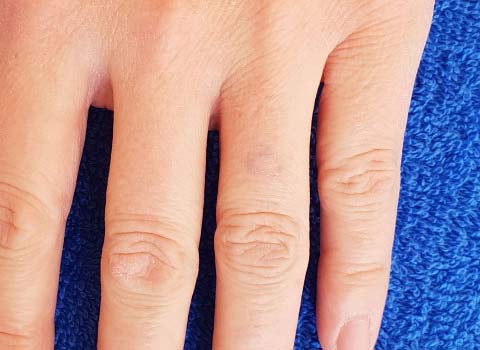Fade and Cover!
Tattoos have become a mainstream form of body art and self-expression in today’s society. However, not all tattoos age well and many people regret their tattoo choices as they become older. Fortunately, laser tattoo removal has emerged as a popular solution to help people remove or fade unwanted tattoos.
Laser tattoo removal is a non-invasive technique that uses high-intensity light to break up the pigment in the tattoo allowing the body’s immune system to absorb and remove the ink over time. While this can be effective in fading or removing tattoos it is important to understand the process and limitations before proceeding.
The effectiveness of laser tattoo removal depends on several factors including the size, colour and age of the tattoo. Generally, older tattoos that have faded over time are easier to remove than newer more vibrant tattoos.
Tattoos with darker colours such as black are also easier to remove than tattoos with lighter colours such as white or yellow. Larger tattoos may require more sessions of laser treatment to achieve desired results.
It is important to note that some tattoos may be resistant to laser treatment, particularly those that were done with low-quality ink or those with scarring.
You can check out our Price list or if you would prefer a more accurate quote why not use our Personalised quick quote form below. Alternatively book a Free Consultation for more information.
Check out our gallery to see for yourself how effective our treatments have been.
Laser Tattoo Removal Process
Laser tattoo removal is a gradual process that typically requires multiple treatment sessions spaced several weeks apart. The number of sessions required will depend on the size, colour and age of the tattoo as well as the individual’s skin type and immune system response.
During each session a technician will use a laser to deliver intense pulses of light to the tattoo. The light is absorbed by the tattoo pigment causing it to break up into smaller particles that the body’s immune system can absorb and eliminate over time.
Each session typically lasts 15-30 minutes and most people experience some degree of discomfort or pain during the procedure. However, numbing cream can be applied to the area to minimize discomfort.
After each session the treated area may be red, swollen and tender for several days. The skin may also blister or scab as it heals.
It is important to keep the treated area clean and protected from sunlight and other irritants during the healing process. It is also important to follow any aftercare instructions provided by the technician to minimize the risk of infection or other complications.
The Limitations
While laser tattoo removal can be effective in fading or removing tattoos it is important to understand that it may not completely erase the tattoo. Some tattoos may leave behind a faint shadow or “ghost” of the original design, particularly those with light colours or that were done with low-quality ink.
In some rare cases the skin may also be slightly discoloured or scarred after laser treatment. It is important to discuss these risks and limitations with a qualified technician before proceeding with the treatment.
If a tattoo cannot be completely removed, another option is to cover it up with a new tattoo. Many people choose to cover up old tattoos with larger, darker designs that can effectively mask the original tattoo.
However, it is important to wait until the skin has fully healed after laser treatment before getting a new tattoo. This will help ensure that the new tattoo is applied to healthy undamaged skin and will help prevent infection or other complications.
In conclusion, laser tattoo removal can be an effective way to fade or remove unwanted tattoos. However, the effectiveness of the treatment will depend on several factors including the size, colour and age of the tattoo.
It is important to understand the risks and limitations of laser tattoo removal before proceeding with the procedure. If a tattoo cannot be completely removed covering it up with a new tattoo may be another option to consider.















